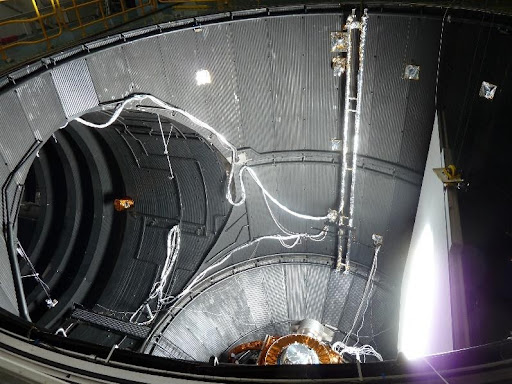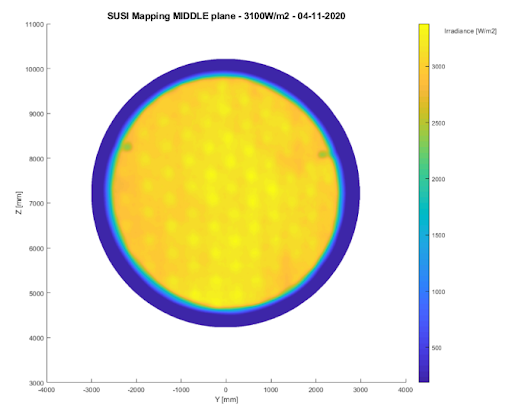Sun Irradiance Measurement
General Description
Sun irradiance is an important parameter affecting the satellites in space.
At the ESTEC Test Centre, the LSS and the VTC1.5 are facilities equipped with a sun simulator.
In order to calibrate these artificial sun beams, the solar irradiance can be measured in terms of power, homogeneity and geometry.
The main instrumentation for this measurement method are a projection screen, an absolute radiometer, a digital camera and a laser tracker system.

Test mode
The test method is based on placing a projection screen into the sun beam at different reference positions within the vacuum chamber volume.
The reflected light is captured by the digital camera. The digital level of the camera is scaled to irradiance (W/m2 or Solar Constant) with the absolute radiometer, which is placed in a hole in the middle of the projection screen.
The laser tracker system is used to measure the location of the projection screen and to transform the image data into 3D space (geometrical camera calibration).
An in-house developed Matlab tool is used to extract the statistics of the beam (i.e. average/ minimum/ maximum irradiance, beam homogeneity, beam diameter and beam position).
As part of the Sun Irradiance measurement, the collimation angles (both optical and geometrical) can be measured. Specifically for the determination of the optical collimation angle, a pinhole camera is used, whereas the geometrical collimation angle is derived from the radius of the mirror segments and the corresponding irradiance data.

Sun Beam Adjustment by Mirror Alignment:
The Sun simulator of the LSS (SUSI) includes a large collimation mirror, built up by 121 hexagonal mirrors.
These mirrors can be rotated and therefore they give the system the ability to converge the light to higher irradiance levels up to 10 Solar Constant.

